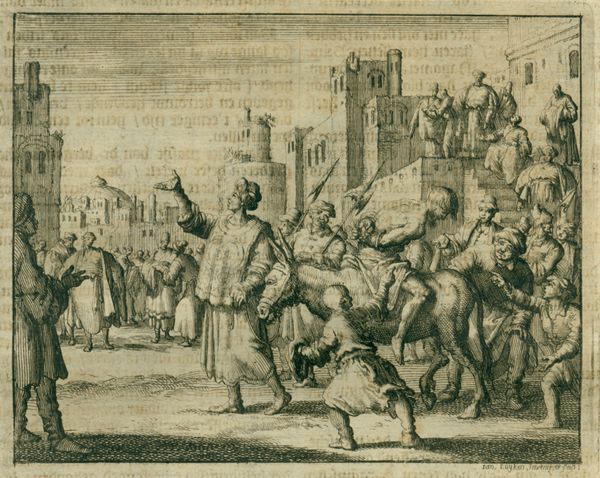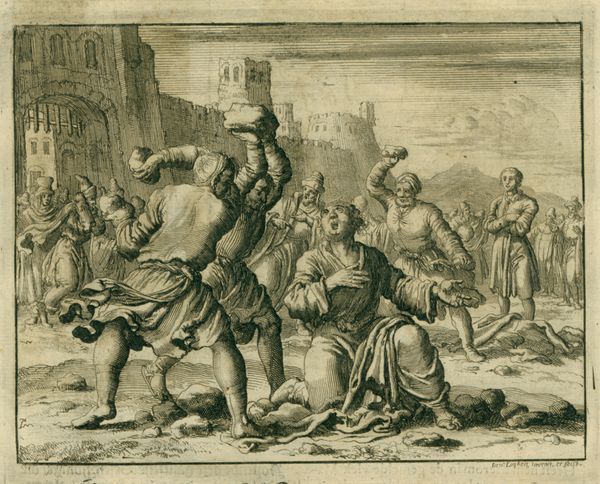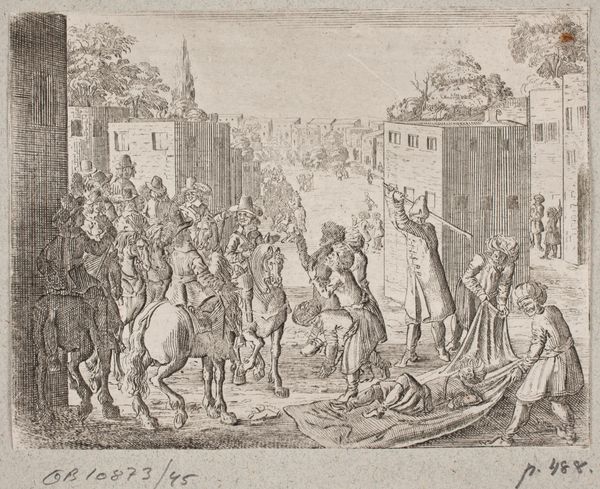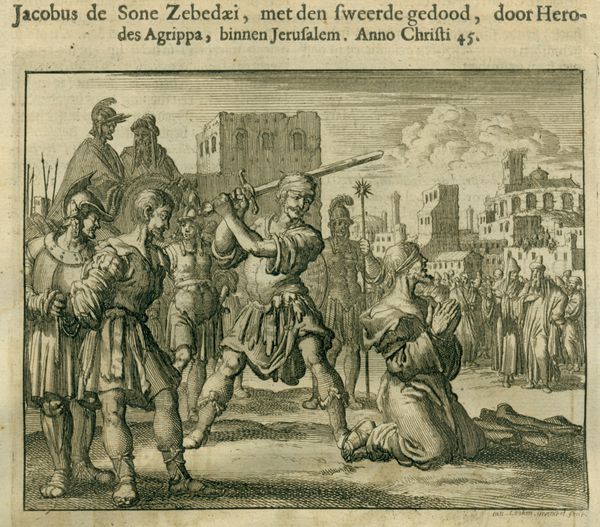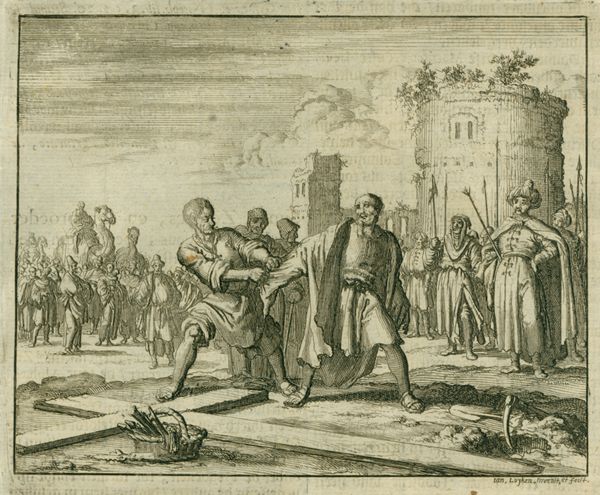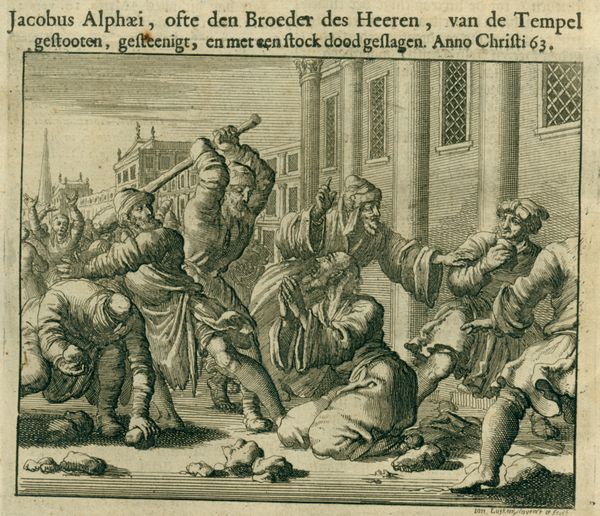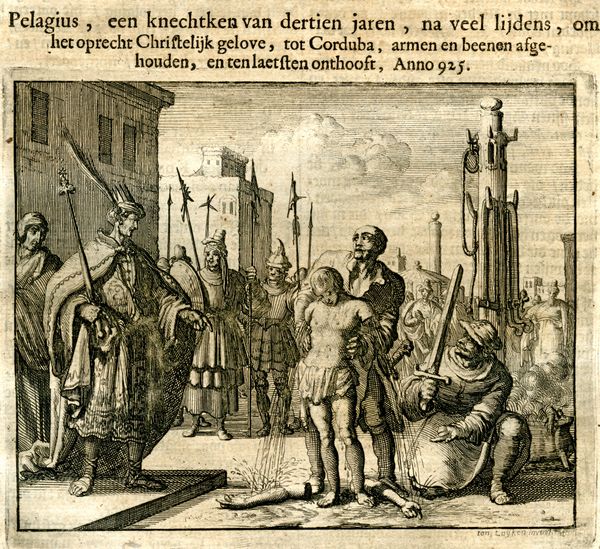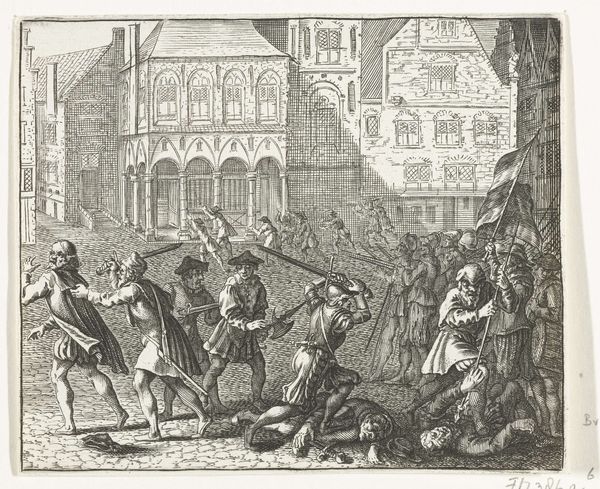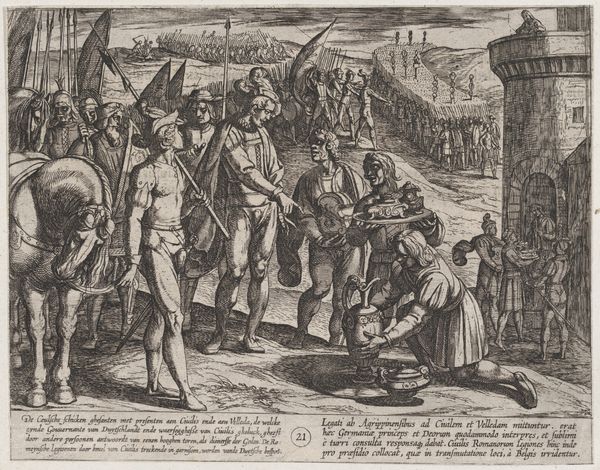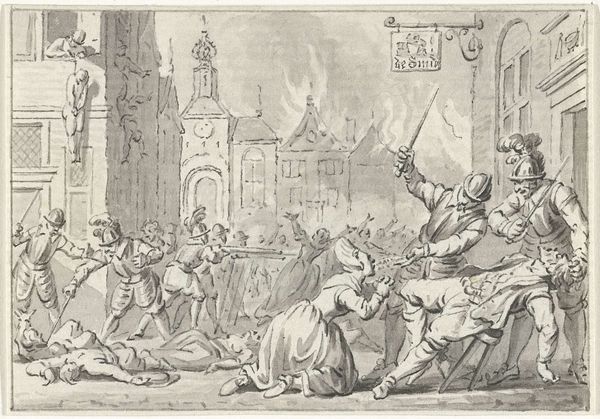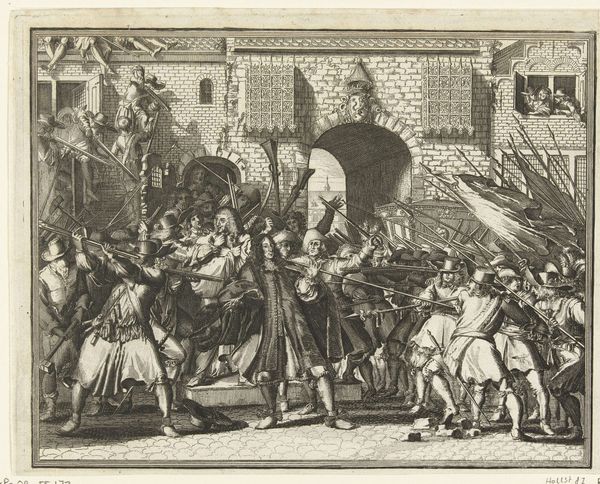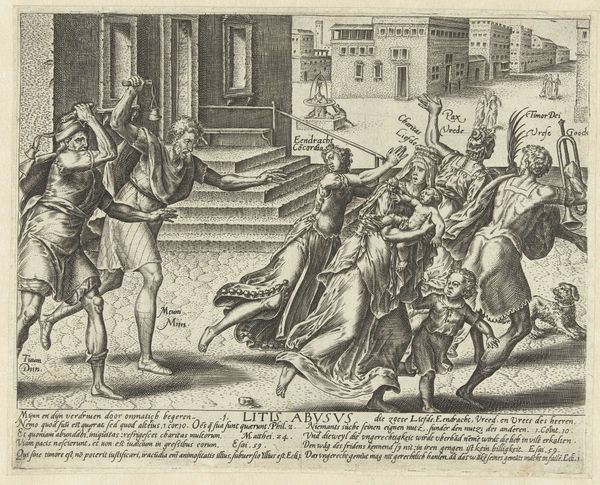
print, engraving
#
narrative-art
#
baroque
# print
#
old engraving style
#
figuration
#
history-painting
#
engraving
Copyright: Public domain
Editor: So this is "Stoning of Apostle Philip, Hierapolis, Phrygia, AD 54" by Jan Luyken, an engraving from 1685. It’s pretty brutal. The Apostle is tied to a pillar and people are throwing stones at him. It’s interesting how Luyken depicts the crowd with such… engagement, like they're really into it. What do you see in this piece beyond the immediately obvious violence? Curator: What I see is a meticulously crafted piece of propaganda reflecting the sociopolitical climate of the 17th century. Consider, this print was made during a time of intense religious conflict. Depictions of early Christian martyrs being persecuted served a distinct purpose. How might images like this have influenced public opinion and justified certain actions in Luyken’s time? Editor: I hadn't thought of it that way. I guess it's not just about a historical event, but about shaping contemporary attitudes. So, it's less about historical accuracy and more about… religious messaging? Curator: Exactly. The 'accuracy' is in the emotional resonance and the reinforcement of certain beliefs. Think about who commissioned these prints, where they were distributed, and who the intended audience was. Understanding these aspects can illuminate the political agency embedded within the image. Are the figures depicted as Roman or more contemporary? Editor: They almost seem like a mix, honestly. Some of the clothing seems period accurate-ish to the 1st century CE, others, not so much, definitely stylized and of the 17th Century in depiction, what about this blurring of the lines is interesting from an historical perspective? Curator: It’s deliberate anachronism, collapsing historical distance. By visualizing biblical events with contemporary allusions, the print attempts to make them feel immediate and relevant to its 17th century audience. The message becomes: "This happened then, and it could happen now." It reinforces a sense of shared identity, possibly against religious and/or political "others." Editor: I'm starting to see it as more than just an illustration, almost a tool, weaponized with imagery, for social influence. Thanks, that gives me a lot to think about. Curator: Indeed. The stoning scene becomes a cautionary tale, a potent symbol manipulated for socio-political purposes. Art isn’t created in a vacuum and neither it's display and context.
Comments
No comments
Be the first to comment and join the conversation on the ultimate creative platform.
